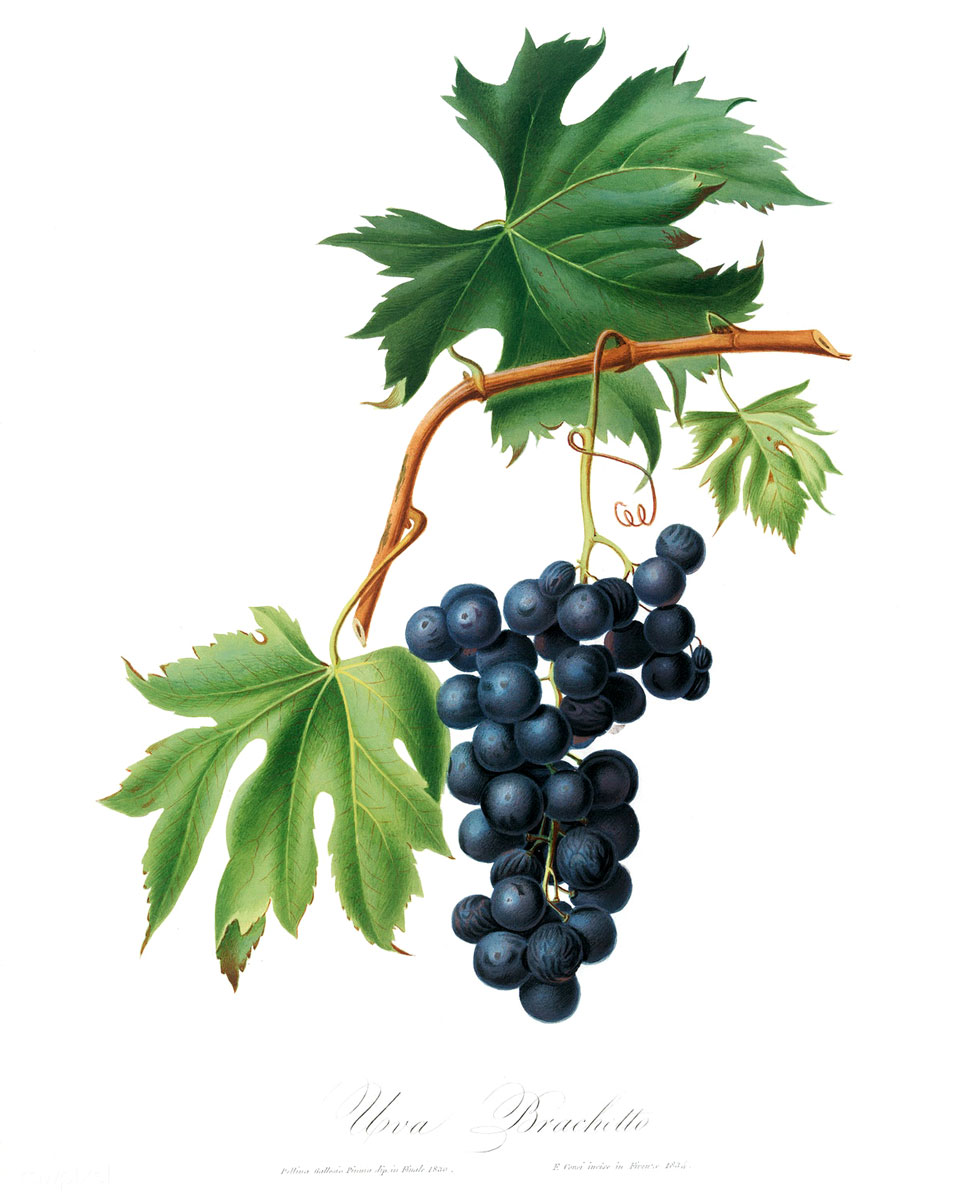Grape

Origin: Mediterranean
Family: Vitaceae
Scientific Name: Vitis vinifera
Folk Names: Vine
Magical
Element: Water
Day: Monday
Planet: The Moon
Zodiac: Scorpio
Associated Celebrations: AutEx
Deities: Bacchus, Dionysis, the Green Man, Hathor, Liber, Lugh, Mabon, Madron, Modron, Saturn, Thor
Parts Used: Fruits
Magical Properties: Fertility, prosperity, mental powers, money
Lore
- Eighth-century Irish Law Bretha Comaithchesa lists the Vine as one of the eight ‘chieftain’ trees, along with Alder, Hazel, Oak, Ivy, Sloe, Furze, and Heath.
Aromatherapy
Part Used: Seeds
Extraction Method: Cold-Pressed
Flash Point: 550°C
Perfume Use: Base oil
Shelf Life: 6-12 months
Scent Description: Faint, nutty
Topical Use
Skin Types: All
Absorption Rate: Fast/medium
Viscosity: Thin
Properties: Restorative, smoothing, anti-inflammatory, antioxidant, mildly astringent.
Notes: Most grapeseed oil is solvent-extracted, but cold-pressed is recommended.
Practical
After pruning the vines, the leaves and young stems are often used to feed livestock.
Culinary
Grapes are eaten fresh, processed to make juice, vinegar, or wines, or dried to make raisins. Grape leaves can also be used in cooking.
Botanical
The grape genus Vitus contains 79 species. Vitis vinifera, the common grape vine, has 5,000-10,000 different varieties.
Type: Woody vine
Plant size: to 32m length
Bark: Flaky, brown bark
Leaves: Broad, lobed leaves, 5-20cm long
Flowers: Tiny, pale flowers
Fruit: Round, green to purple/red berries, up to 3cm diameter, growing in clusters of 15+
In the Garden
Type: Perennial vine
Sow: Winter
Light: Full sun
Soil: Well-drained
Companion Planting: Agastache, chives, garlic, nasturtium
Tips:
- Mulch annually with well-potted compost
